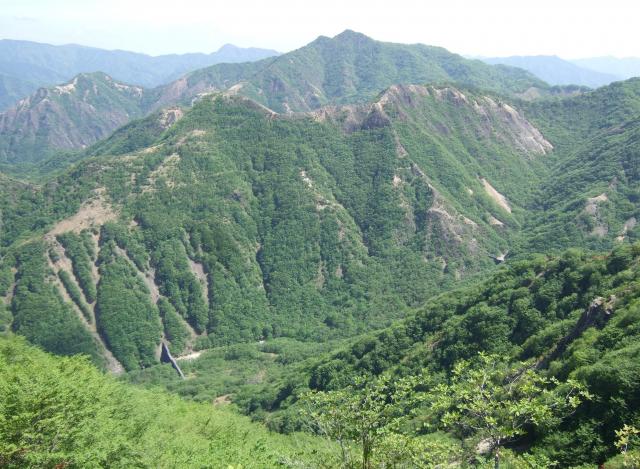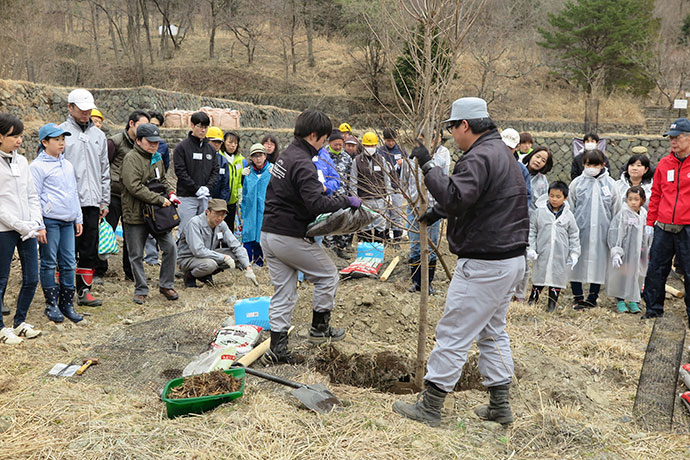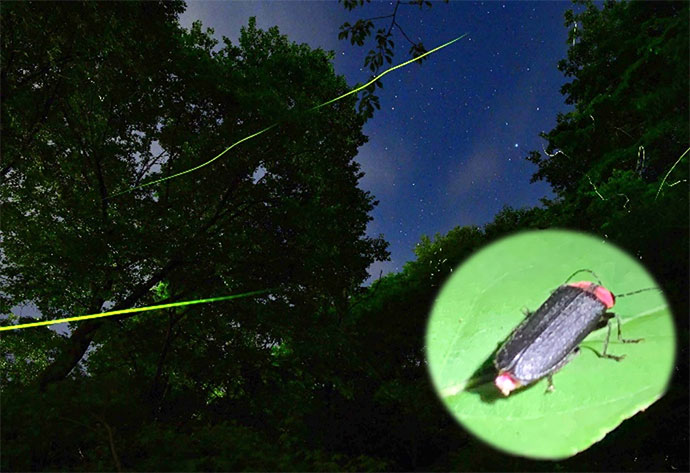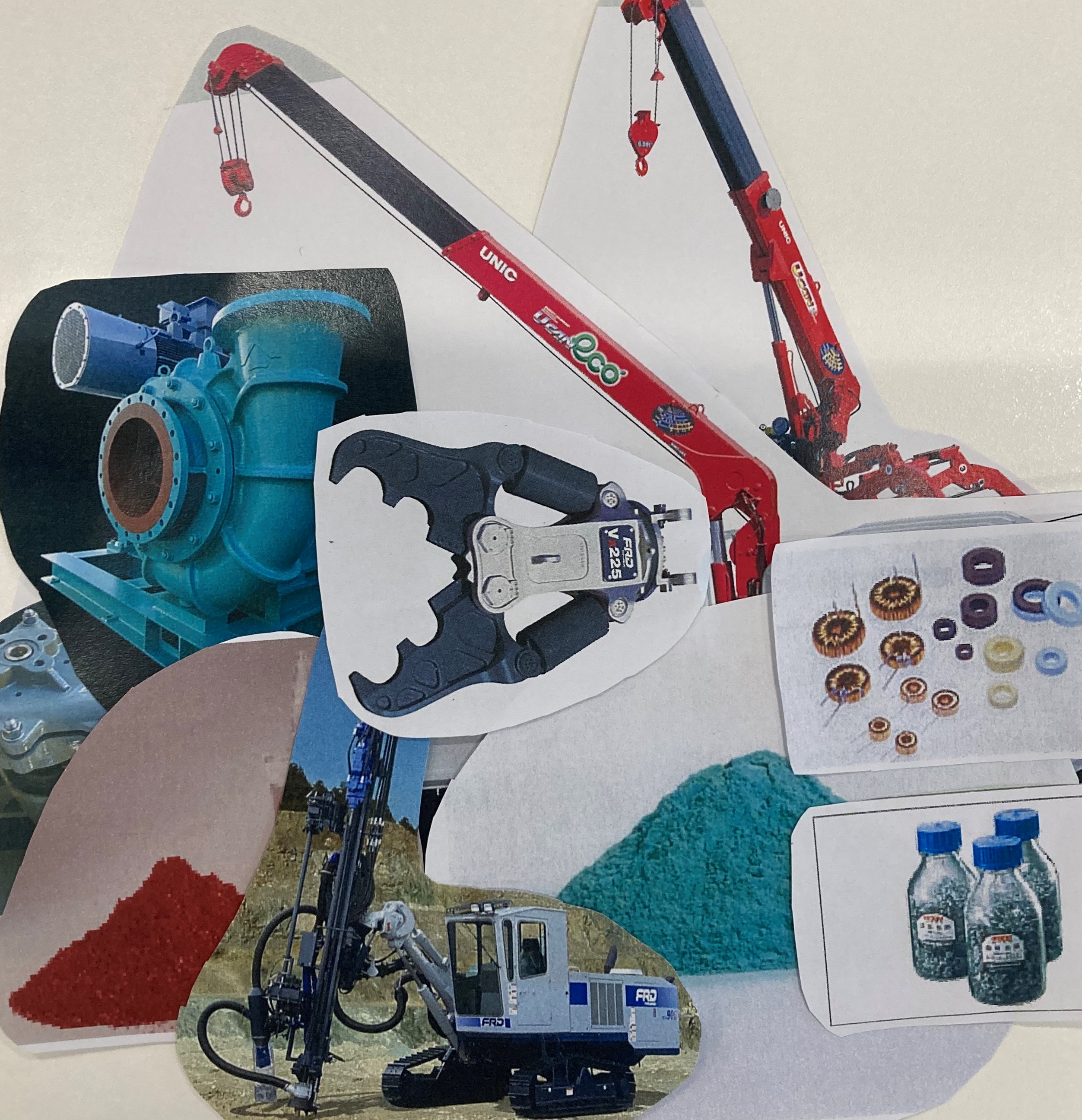Environment
The Furukawa Company Group considers conservation of the global environment to be a major management issue, and our basic policy is that all staff conducts activities giving consideration to harmony with the environment as well as environmental improvement, and promotes a sustainable society going forward, in all areas of corporate activities.
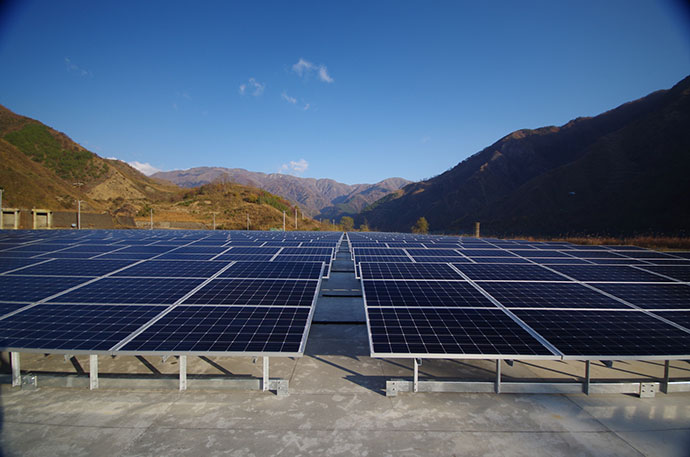
Ashio Office Solar Power Plant
Furukawa constructed a solar power plant (officially called the Furukawa Co., Ltd. Ashio Office Solar Power Plant) on the site of the former Ashio smelting works sulfuric acid plant (Ashio-machi, Nikko City, Tochigi Prefecture), and started power generation and transmission in December 2013.
The completed solar power plant has an output of 1,000 kW. The annual power generation capacity started at approximately 920,000 kWh and is expected to be approximately 850,000 kWh on average over a 20-year period. The entire amount is being sold to Tokyo Electric Power Company Holdings, Incorporated.
The Ashio area was the foundation of our company's business development and it is an important site both historically and technically. We will continue to investigate the effective use of this site, including the former Ashio smelting works site, and will actively develop activities to conserve the global environment and to contribute to local communities.
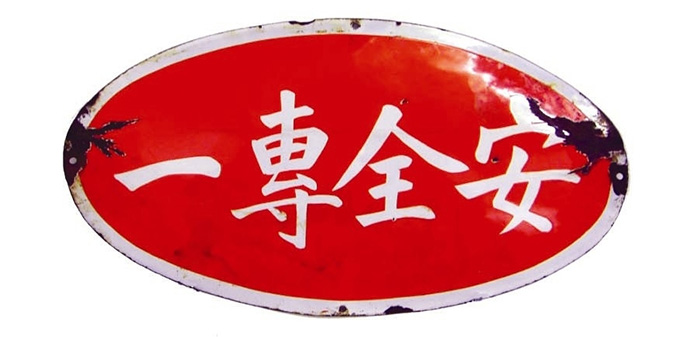
"Anzen Sen'ichi" Registered asTrademark
The predecessor of "Anzen Daiichi" (=Safety First) was "Anzen Senichi"
Furukawa filed a trademark application for the "Anzen Senichi" mark and obtained trademark registration in March 2020. The Ashio Copper Mine, which built the development of the Furukawa Company Group, was the birthplace of pollution-control technology and the industrial safety movement in Japan. After a visit to the United States to study copper mining and smelting technology, Masayuki Odagawa, the manager of the Furukawa Kogyo Ashio Mining Office (now, the Furukawa Co., Ltd. Ashio Office), brought back the concept of "Safety First" that was advocated by an American steel company and translated it as "Anzen Senichi".
After that, "Anzen Senichi" safety first signs were posted at the Ashio Copper Mine to instill safety awareness among the employees and promote safety activities. This is said to be the beginning of the safety movement in Japanese industry. The predecessor of the "Anzen Daiichi" (=Safety First) which is now displayed at construction sites and factories was "Anzen Senichi" and that message has been firmly inherited by the Japanese industrial movement.
ISO 14001 certification
| Company name | Date of acquisition | ISO certification body |
|---|---|---|
| Furukawa UNIC Corporation Sakura Works | November 30, 2001 | Japan Quality Assurance Organization |
| Furukawa Industrial Machinery Systems Co., Ltd. Oyama Tochigi Works* | October 22, 2002 | Nippon Kaiji Kyokai (ClassNK) |
| Furukawa Co., Ltd. Technology Division | January 14, 2004 | Japanese Standards Association (JSA) |
| Furukawa Rock Drill Co., Ltd. Takasaki Yoshii Works | April 28, 2004 | TÜV Rheinland Japan Ltd. |
| Furukawa Chemicals Co., Ltd. Osaka Works | January 27, 2005 | JIC QUALITY ASSURANCE LTD. |
| Furukawa Denshi Co., Ltd. Iwaki Works | March 4, 2005 | Japan Quality Assurance Organization |
| Gunma Kankyo Recycle Center Co., Ltd. | January 26, 2010 | Management System Assessment Center |
| Taian Furukawa UNIC Crane Co., Ltd. | June 15, 2018 | Shanghai Audit Center of Quality System |
| FURUKAWA UNIC (THAILAND) CO., LTD. | May 26, 2019 | Perry Johnson Registrars, Inc. |
- *Tochigi works acquired integrated certification with the Oyama works on June 19, 2009.

